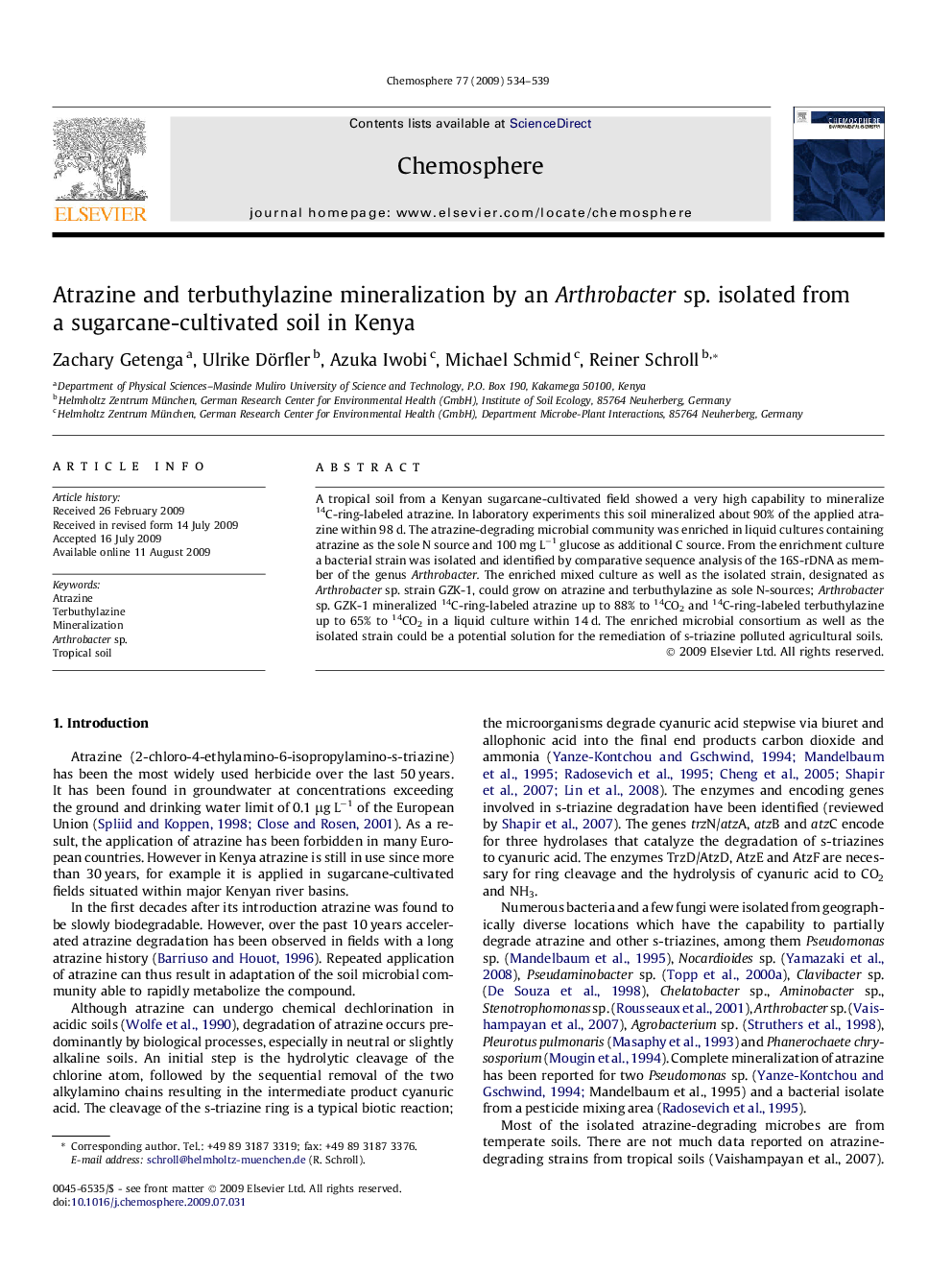| Article ID | Journal | Published Year | Pages | File Type |
|---|---|---|---|---|
| 4412732 | Chemosphere | 2009 | 6 Pages |
A tropical soil from a Kenyan sugarcane-cultivated field showed a very high capability to mineralize 14C-ring-labeled atrazine. In laboratory experiments this soil mineralized about 90% of the applied atrazine within 98 d. The atrazine-degrading microbial community was enriched in liquid cultures containing atrazine as the sole N source and 100 mg L−1 glucose as additional C source. From the enrichment culture a bacterial strain was isolated and identified by comparative sequence analysis of the 16S-rDNA as member of the genus Arthrobacter. The enriched mixed culture as well as the isolated strain, designated as Arthrobacter sp. strain GZK-1, could grow on atrazine and terbuthylazine as sole N-sources; Arthrobacter sp. GZK-1 mineralized 14C-ring-labeled atrazine up to 88% to 14CO2 and 14C-ring-labeled terbuthylazine up to 65% to 14CO2 in a liquid culture within 14 d. The enriched microbial consortium as well as the isolated strain could be a potential solution for the remediation of s-triazine polluted agricultural soils.
